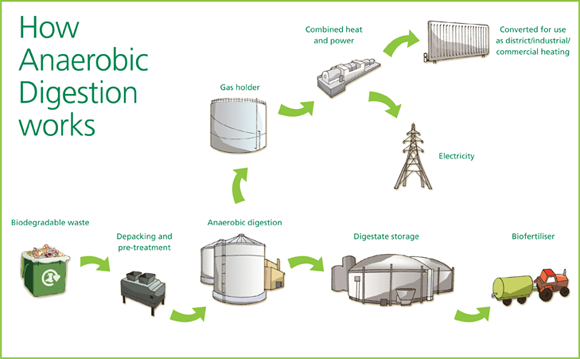Have you ever wondered what happens to your household wastes after you send them away? Most of the time they will be taken to landfill sites or incinerations. Accumulation of waste has become a very heavy and smelly environmental problem. Methane gas released from landfill sites as a result of anaerobic digestion of biodegradative wastes by anaerobic bacteria is explosive and responsible for greenhouse effect. Poorly-managed landfill sites may attract vermin or cause litter. Incinerating waste may cause air pollution and acid rains due to the release of toxic gases. Most of all, disposal cost at landfills and incineration fees are very high. People have been seeking solutions for this massive challenge for a long period of time and it was discovered that microorganisms could be adopted in waste management as they serve positive functions to make things easier in a cost-effective manner. Hence, as a successful way of combatting this phenomenon, waste can be sent to a specialist anaerobic digestion facility and transform waste into useful fuel and fertilizer instead of sending them to landfill sites and incinerations.
The process of biodegradation of organic wastes includes several steps. First of all, let us see what does ‘biodegradable’ mean. Biodegradable wastes mainly consist of plant waste and waste of animal origin. They can be easily decomposed by microbes and does not constitute major source of pollution for long period of time. As the first step of this process, after garbage are collected, they will be sent to a facility. At the facility organic materials and recyclable materials will be removed from the garbage bags. Marketable recyclables wastes such as plastics and metals will be sorted and sent to market to be remanufactured into new products. Organic waste will be separated from impurities and shredded and broken down into bioliquid in enclosed tunnel buildings. This helps to kill off other unwanted bacteria and to make sure it is easier for anaerobic bacteria for anaerobic digestion. After proper mixing of bioliquid it will be fed into the anaerobic digester.
Anaerobic digestion is a natural process that uses microbes found in the environment to break down complex organic material into simple environmentally acceptable inorganic materials such as water, carbon dioxide and biomass in the absence of oxygen. This is done by anaerobic bacteria such as, Eschericia sp., Enterobacter sp., Pseudomonas sp., Acetobacter, Bifidobacter sp. Acetogenesis etc. Anaerobic digestion produces methane rich biogas. This gas will be captured within the sealed environment of the digestion tank. Since it is contaminated, it has to be cleaned before further use. Then the cleaned methane gas will be collected and can be used either to generate renewable electricity by burning or to inject into a gas network. Isn’t it amazing how anaerobic digestion turn food waste and other organic waste into a source of renewable energy? Up to 90 percent of the energy generated by the process can be exported to the national grid or used locally. One lorry load of food waste can generate enough energy to power for twenty thousand TVs for an hour.
Heat is a important by-product of this process. This heat can be combined with power and converted for use as district, industrial or commercial heating and also to heat the plant itself. This makes the whole Anaerobic Digestion process almost entirely self-sufficient in power and heat.
Once the biogas is harvested, the leftover which is rich in nutrients such as nitrogen can be collected and used to produce organic fertilizer called ‘digestate’. We can use digestate which is similar to high quality compost in place of chemical fertilizer that causes many environmental impacts. Anaerobic Digestion by bacteria allows us to use organic waste to return vital nutrients back to the land.The significant role these tiny organisms play in the ‘organic waste to renewable energy’ process while minimizing the damage to our environment is amazing.

References:
- Image: how anaerobic digestion works, https://walesrecycles.org.uk/sites/files/recyclenow/media_wysiwyg/AD_Process_Diagram.png
- Microorganisms in Waste Management, Research J. Science and Tech. 10(1): January-March, 2018.Available at: www.anvpublication.org
- Role of Microbes in Waste Recycling, April 25, 2017, By Yasmin Zinn.Available at: https://sciencing.com/role-microbes-industry-8044034.html